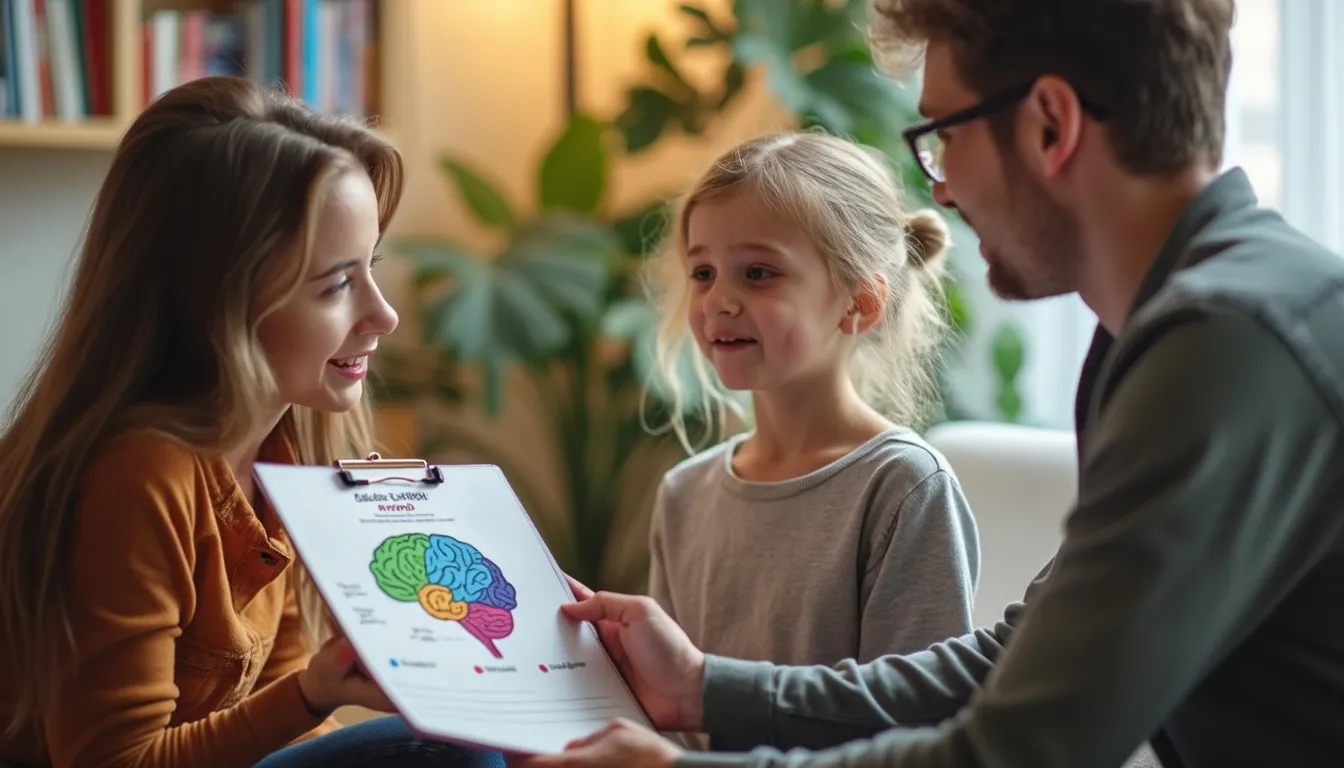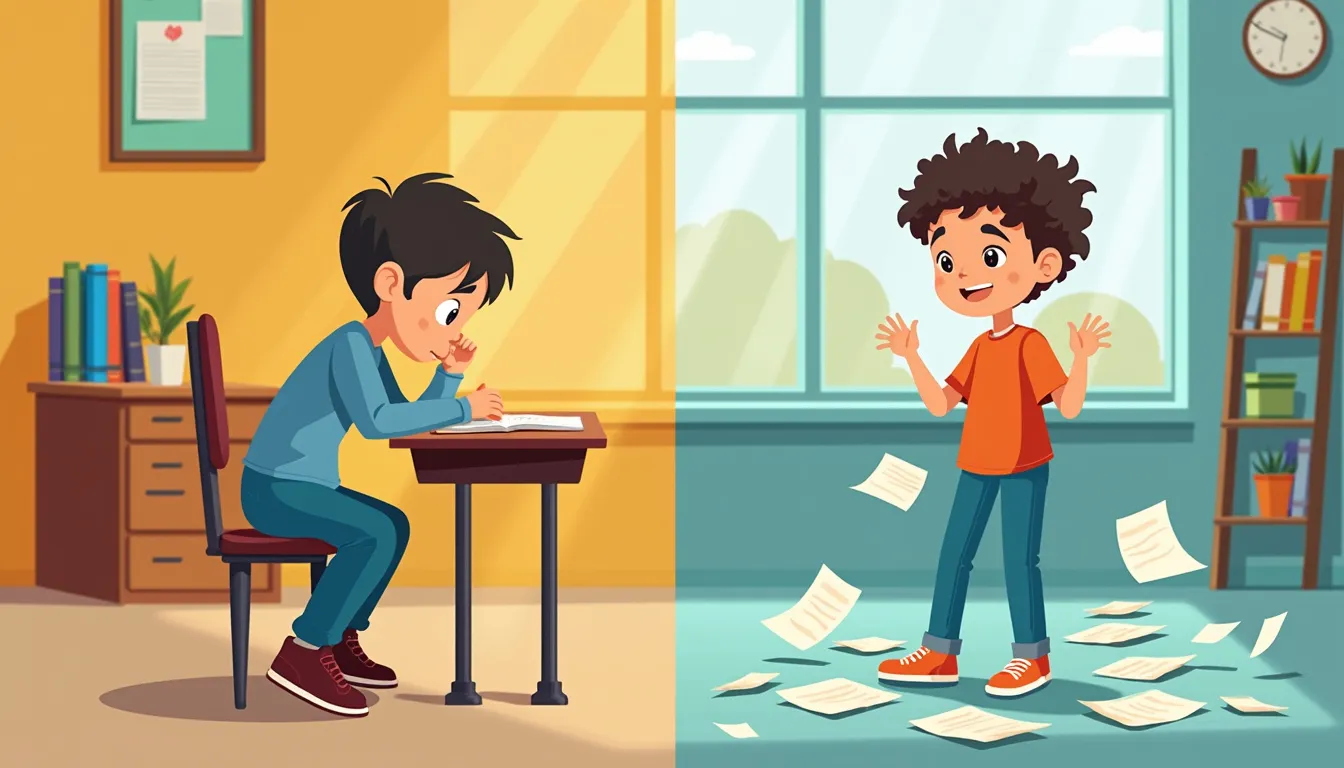Spotting Hyperactivity in ADHD: More Than Just Being Energetic

All children have energy—it’s a natural part of growing up. They run, jump, laugh, and play with an enthusiasm that can seem boundless. For parents, distinguishing between normal high-energy and ADHD-related hyperactivity can be confusing. Hyperactivity, a hallmark symptom of ADHD, goes beyond ordinary childhood exuberance and often poses challenges that can disrupt daily life.
This journal will help you identify the differences, recognize specific symptoms of ADHD-related hyperactivity, and provide actionable strategies to channel that energy in positive and productive ways. We’ll also include real-life success stories from parents who have creatively managed their child’s hyperactive tendencies.
Understanding Hyperactivity in ADHD
What is ADHD Hyperactivity?
Hyperactivity is one of the three primary symptoms of ADHD, alongside inattention and impulsivity. While it’s normal for children to have bursts of high energy, hyperactivity in ADHD is persistent, pervasive, and often out of sync with typical developmental behaviors.
What Makes ADHD-Related Hyperactivity Different?
-
Intensity and Frequency: Unlike occasional bursts of energy, hyperactivity in ADHD is constant. These children rarely seem to “wind down.”
-
Situational Inappropriateness: ADHD hyperactivity often manifests in settings where calm behavior is expected, such as classrooms, meals, or quiet family time.
-
Difficulty Controlling Energy: Children with ADHD struggle to regulate their energy levels, even when they recognize the need to sit still or focus.
This hyperactivity is not a reflection of poor discipline or laziness—it’s a neurological difference that affects the brain’s ability to self-regulate.
Symptoms of ADHD-Related Hyperactivity
Recognizing hyperactivity as a symptom of ADHD involves looking for patterns and behaviors that persist across different environments and contexts. While every child is unique, there are common signs that suggest hyperactivity is linked to ADHD.
Key Indicators to Watch For:
-
Constant Movement: Children with ADHD often seem unable to stay still. They may pace, fidget, climb furniture, or tap their hands and feet, even during calm activities like watching a movie.
-
Difficulty Sitting During Meals or School: Hyperactive children may frequently get up during meals or classroom activities, finding it hard to stay seated for extended periods. They might squirm in their chair or slide off entirely.
-
Excessive Talking: Rapid or nonstop talking is another hallmark of ADHD-related hyperactivity. These children may struggle to wait their turn in conversations or interrupt others frequently.
-
Impulsive Physical Actions: Hyperactivity often pairs with impulsivity, leading children to run, jump, or engage in rough play at inappropriate times. This can result in accidents or conflicts with peers.
-
Blurting Out Answers or Thoughts: In structured settings like school, hyperactive children may speak out of turn, often unable to resist the urge to share their thoughts immediately.
-
Restlessness and Trouble Relaxing: Even during downtime, children with ADHD may struggle to relax. They may feel “on edge” and look for ways to release pent-up energy, often in ways that seem chaotic or disruptive.
Differentiating Hyperactivity from Typical Energetic Behavior

It’s important to understand that not every energetic child has ADHD. Normal high energy is situation-specific and often aligns with developmental stages. Here are some key differences:
| Typical High Energy | ADHD-Related Hyperactivity |
|---|---|
| Occurs during specific activities, like playtime. | Occurs across all settings, even when calm is required. |
| The child can wind down when needed. | The child struggles to slow down or self-regulate. |
| Energy is proportional to the situation. | Energy levels seem excessive and unrelated to context. |
Managing Hyperactivity: Strategies and Activities
Parents play a pivotal role in helping children with ADHD channel their hyperactivity into constructive outlets. These strategies aim to balance their need for movement with the demands of daily routines.
1. Physical Activities to Burn Energy
Physical exercise is one of the most effective ways to manage hyperactivity. Structured activities provide an outlet for energy while teaching discipline and focus.
-
Examples: Enroll your child in sports like swimming, soccer, or martial arts. These activities not only burn energy but also promote teamwork and self-control.
-
Daily Movement: Incorporate short bursts of physical activity throughout the day, such as jumping jacks, running, or stretching breaks.
2. Create a Movement-Friendly Environment
Instead of expecting your child to sit still for long periods, provide opportunities for movement within daily routines.
-
Fidget Tools: Use stress balls, fidget spinners, or resistance bands to channel restless energy.
-
Flexible Seating: Try options like wobble stools, yoga balls, or standing desks to support movement while maintaining focus.
3. Structured Routines
Hyperactive children benefit greatly from predictable routines. Knowing what to expect helps them feel secure and minimizes impulsive behavior.
-
Visual Schedules: Use charts or calendars to map out the day, breaking activities into manageable chunks.
-
Transition Cues: Give advance warnings before transitioning between activities to help your child adjust.
4. Mindfulness and Relaxation Techniques
While mindfulness may seem counterintuitive for hyperactive children, it can teach them to slow down and develop self-awareness.
-
Breathing Exercises: Practice deep breathing together, using visual aids like balloons or bubbles to make it fun.
-
Guided Imagery: Encourage your child to imagine a calm place and guide them through relaxing their body step by step.
5. Positive Reinforcement
Acknowledging and rewarding effort is key to helping your child develop self-regulation skills.
-
Behavior Charts: Use charts to track progress and reward accomplishments, like staying seated during dinner or completing a homework task.
-
Celebrate Small Wins: Praise specific actions, such as waiting their turn to speak or using a fidget tool appropriately.
When to Seek Professional Guidance

While hyperactivity can often be managed with creative parenting strategies, there are times when professional support is necessary. Consider consulting a pediatrician or psychologist if:
-
Hyperactivity significantly disrupts your child’s ability to succeed at school or maintain friendships.
-
You feel overwhelmed or unsure how to manage your child’s behavior.
-
You suspect other co-occurring conditions, such as anxiety or learning disabilities.
A comprehensive evaluation can provide clarity and guide treatment options, which may include behavioral therapy, medication, or parent coaching.
Conclusion: Embracing Hyperactivity as a Strength
Hyperactivity in children with ADHD is not merely a challenge—it’s also a part of what makes them unique. These children often have boundless creativity, enthusiasm, and energy that can be channeled into incredible strengths with the right guidance. By understanding the nature of ADHD-related hyperactivity, recognizing its symptoms, and implementing effective strategies, you can help your child thrive.
Remember, managing hyperactivity is a journey that requires patience, empathy, and a willingness to adapt. Celebrate small victories and seek support when needed. Most importantly, embrace your child’s energy as a vital part of who they are, and together, you’ll discover ways to turn their hyperactivity into opportunities for growth and success.



